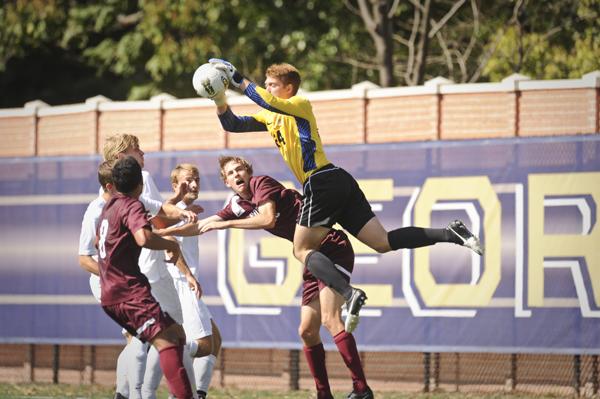
The $75 million building taking shape on 24th Street is the crowning achievement of the 16-year-old School of Public Health and Health Services. But now, professors are debating how to use it.
To stimulate the kind of multidisciplinary research that would raise the school’s profile and bring in grant money, the college could ditch the layout of a typical academic building and instead offer space to professors from different fields, splitting up faculty who have spent years working side by side.
“One of the things that really has been a focus for me – and with this opportunity to move into this building – is stimulating interaction among our faculty who, in many cases, have never met each other,” Lynn Goldman, the school’s dean, said. “They’re not really interacting day-to-day.”
The building, to be occupied in March, will bring public health professors under one roof for the first time after years of teaching and researching in buildings scattered on and off campus. Its completion will also set off a hiring spree, as the college looks to employ up to 40 new professors over the next several years.
Goldman said faculty could be sorted by research center or assigned randomly – with hopes to create a naturally interdisciplinary office. Each department would have its own central office, but individual professor’s spaces would be located throughout the 115,000-square-foot building.
The final decision rests with the school’s faculty advisory committee, led by Senior Associate Dean Josef Reum. That committee will make a recommendation on the space setup by the end of this year.
Olga Acosta Price, an associate professor of prevention and community health, said mixing departments would support more communication among all faculty, but could hurt individual departments.
“We need to be sure to not leave any stone unturned about this. This is a great opportunity, but let’s not do this so quickly that we haven’t thought it through,” she said.
Jeffrey Bingenheimer, an assistant professor of prevention and community health, said just housing the entire faculty in one building would spur more collaboration, but questioned the effectiveness of the shift.
“Certainly the mixing of departments has an advantage for interdisciplinary research, but there is also a lot of business that is department by department. So from that point of view, there might be some advantages to have it divided,” he said.
Government-sponsored research, like an ongoing $1.3 million study on autoworkers’ end-stage kidney cancer, would likely move to the new building as a way to pull in more revenue for GW as a whole. The federal government covers more costs for research done in University-owned buildings than in rented space.
Some foundation-sponsored research – which typically cover leasing costs – will remain in the K Street building. Researchers working in wet-lab spaces will continue working in Ross Hall.
Goldman said the school will see the most success if it can hire up to 40 professors, which would expand the faculty by about 50 percent. That push would give existing faculty time to focus on research while maintaining a high quality level of teaching, she said.
Goldman added that a randomized layout would be beneficial as new faculty join the school because it would not require re-drawing departmental lines within the new building.
The school has hired 37 full-time faculty members since July 2010.
But the school has had a hard time filling enough tenure-track positions. It took about 10 years for the school to meet the Faculty Senate mandate that three-quarters of faculty have a shot at tenure.
Now, Provost Steven Lerman said the University has tried to grow the School of Public Health more quickly than other schools because of the field’s growing importance nationally. He pointed to grants from groups like the National Institutes of Health as opportunities to expand the school in ways other schools cannot.
He said the school’s online master’s of public health, which launched last June, was attracting more students to the school, driving an increase in the number of faculty.
– Colleen Murphy and Chloe Sorvino contributed to this report.







